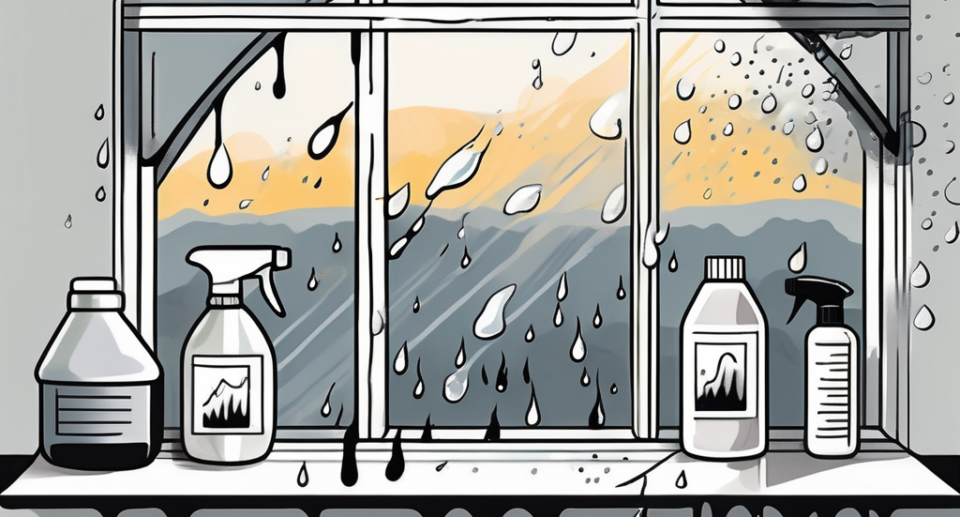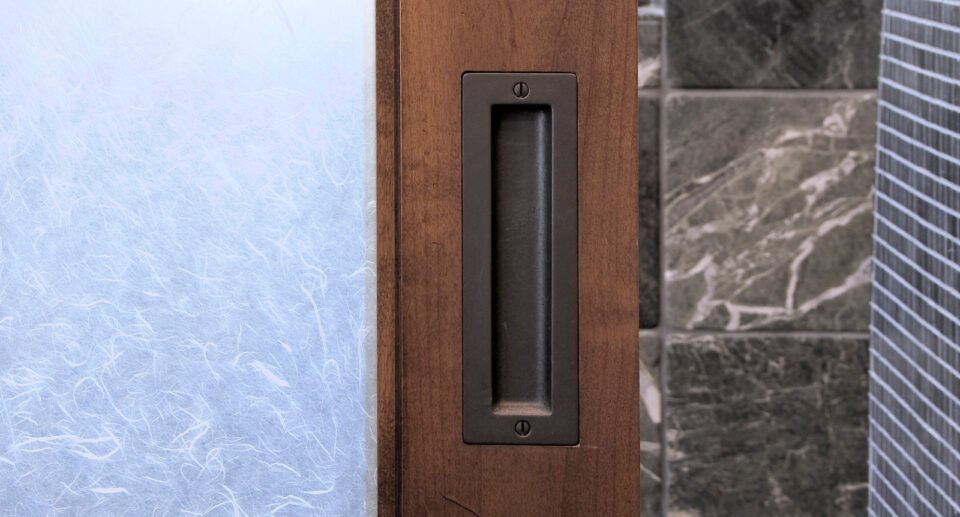Get Rid of Black Mould on Windows: Causes and Prevention Guide

Black mould on windows is a common and unsightly problem that many homeowners face. Not only does it have a negative impact on the appearance of your windows, it can also pose health risks if left untreated. In this comprehensive guide, we will discuss the causes of black mould on windows and provide proactive measures and natural remedies to help you prevent and safely remove mould from your windows.
Understanding the Causes of Black Mould on Windows
One of the key factors that contribute to the growth of black mould on windows is moisture. Excessive moisture provides the ideal conditions for mould to thrive. Whether it’s due to condensation, leaks, or high humidity levels in your home, the presence of moisture can quickly lead to mould growth.
There are several common factors that contribute to the occurrence of black mould on windows. Poor ventilation is one of them. When there is limited airflow around your windows, it can cause moisture to accumulate and promote mould growth. Additionally, inadequate insulation or improperly installed windows can also create areas of high humidity, making them vulnerable to mould infestations.
Furthermore, the type of window frame material can also play a role in the development of black mould. Wooden window frames, for instance, are more susceptible to moisture absorption compared to frames made of materials like uPVC or aluminium. This is because wood has a natural tendency to absorb and retain moisture, providing an ideal environment for mould to flourish.
In addition to moisture and window frame material, external factors can also contribute to the growth of black mould on windows. For example, if your home is located in an area with high levels of air pollution, the pollutants can settle on your windows and create a breeding ground for mould. Similarly, if your windows are frequently exposed to heavy rainfall or are situated in a damp and shaded area, it can increase the likelihood of mould growth.
Debunking the Myths: Is Black Mould Really Dangerous?
There is a widespread belief that black mould is extremely toxic and poses severe health risks. While it’s true that certain types of mould can produce harmful toxins, most black mould found on windows is not as dangerous as it is often perceived to be. However, that doesn’t mean you should ignore it. Black mould can still trigger allergies, cause respiratory problems, and exacerbate existing health conditions, especially in individuals with compromised immune systems.
It’s important to be able to distinguish between harmless and harmful mould. If you notice mould growth on your windows, it is advisable to treat it as potentially harmful and take necessary precautions to prevent further spread and exposure.
Now, let’s delve deeper into the world of mould and explore some fascinating facts that you may not be aware of. Did you know that mould has been around for millions of years? It is a type of fungus that thrives in damp and humid environments, making our homes, particularly bathrooms and basements, the perfect breeding grounds for its growth.
Furthermore, mould comes in various colours, not just black. While black mould is commonly associated with health concerns, other colours like green, blue, and even pink can also indicate the presence of mould. So, it’s essential to be vigilant and not solely rely on the colour of the mould to determine its potential danger.
Additionally, mould spores are incredibly resilient and can survive in harsh conditions. They can remain dormant for extended periods and then quickly multiply when exposed to moisture. This is why it’s crucial to address any water leaks or excessive humidity in your home promptly, as they create the perfect environment for mould growth.
Moreover, mould not only affects our health but can also cause structural damage to our homes. It can weaken walls, ceilings, and floors, leading to costly repairs. Therefore, it’s vital to address any mould issues promptly to prevent further damage and maintain a safe living environment.
Proactive Measures to Prevent Mould on Windows
To effectively prevent mould growth on your windows, it is essential to focus on two main areas: ventilation and humidity control.
Improving ventilation around your windows can help disperse moisture and prevent it from accumulating. Keep your windows open whenever possible to allow fresh air to circulate. This not only helps in reducing moisture but also brings in a refreshing breeze that can invigorate your living space. Imagine the gentle rustle of the curtains as the wind whispers through the room, carrying away any stagnant air that may have been lurking. It’s like nature’s own air purifier, revitalizing your home with its natural touch.
Installing extractor fans in bathrooms and kitchens can also help remove excess moisture from the air. These fans are like diligent assistants, tirelessly working to eliminate any dampness that may have accumulated during your relaxing shower or while cooking up a storm. With their quiet hum, they ensure that your windows remain dry and mould-free, allowing you to enjoy a fresh and hygienic environment.
Controlling humidity levels in your home is equally important. Use dehumidifiers in areas prone to excessive moisture, such as basements and laundry rooms. These clever devices act as moisture detectives, diligently absorbing any excess humidity that may be lurking in the air. With their help, you can bid farewell to the unwelcome presence of mould on your windows, ensuring that your living space remains a sanctuary of cleanliness and comfort.
Furthermore, ensuring that your home is adequately insulated to prevent condensation on windows is crucial. Proper insulation acts as a guardian, shielding your windows from the harsh effects of temperature fluctuations. It creates a barrier against the outside world, keeping your windows dry and mould-free. So, while you relax indoors, your windows remain protected, allowing you to enjoy the view outside without any worries.
Lastly, properly sealing gaps and cracks around windows can also help minimize moisture intrusion. These tiny crevices, if left unattended, can be an open invitation for moisture to seep in, leading to the growth of mould. By sealing them, you create a fortress of protection, ensuring that your windows remain a pristine reflection of cleanliness and care.
Step-by-Step Guide: How to Safely Remove Black Mould from Windows
If you have identified black mould on your windows, it’s crucial to remove it safely and effectively to avoid further contamination. Before you begin the removal process, always ensure you have the necessary safety precautions in place.
First and foremost, protect yourself by wearing gloves, safety glasses, and a mask to prevent inhalation of mould spores. Open windows and doors to maintain adequate airflow during the removal process.
There are several tools and techniques you can employ to remove black mould from windows. A mixture of water and detergent or a specially formulated mould cleaner can be used to scrub the affected areas. Use a soft bristle brush or sponge to gently scrub the mould. Be thorough and make sure to clean all visible mould and surrounding surfaces.
After cleaning, dry the windows thoroughly to minimize the chances of mould regrowth. Dispose of any cleaning materials and contaminated items properly to prevent cross-contamination.
It is important to note that black mould can be a sign of underlying issues with your windows, such as poor ventilation or water leakage. Identifying and addressing these issues is crucial to prevent future mould growth. Inspect the area around your windows for any signs of water damage or condensation. If you notice any, it is advisable to consult a professional to assess and rectify the problem.
Additionally, it is worth mentioning that prevention is always better than cure when it comes to black mould. Regularly cleaning and maintaining your windows can help prevent mould growth. Ensure that your windows are properly sealed and insulated to minimize moisture build-up. Consider using a dehumidifier in rooms prone to high humidity levels, as this can help reduce the risk of mould formation.
Natural Remedies: Removing Window Mould with Vinegar
If you prefer a natural approach to mould removal, vinegar can be an effective and eco-friendly solution. Vinegar contains acetic acid, which has antimicrobial properties that can help kill mould spores.
To use vinegar as a mould remover, simply mix equal parts of distilled white vinegar and water in a spray bottle. Spray the solution onto the affected areas and let it sit for a few hours. Then, scrub the mould with a brush or sponge and rinse the windows with clean water. The acidic properties of the vinegar will help break down the mould, making it easier to remove.
Tackling Wooden Window Mould: Causes and Solutions
Wooden windows present unique challenges when it comes to mould prevention and removal. Wood is a porous material, making it susceptible to moisture absorption, which can lead to mould growth.
One of the key causes of mould on wooden windows is inadequate moisture protection. Ensure that your wooden windows have been properly treated with a sealant or paint to create a barrier against moisture. Regularly inspect your windows for signs of damage, such as peeling paint or cracks, and promptly address any issues to prevent water infiltration.
If you do find mould on your wooden windows, the same cleaning methods mentioned earlier can be applied. Be cautious not to use excessive moisture or saturate the wood, as this can cause further damage. Thoroughly dry the windows after cleaning to prevent mould from returning.
In conclusion, black mould on windows is an issue that should not be taken lightly. By understanding the causes and implementing proactive measures, you can effectively prevent mould growth. If you do encounter mould, follow the recommended safety precautions and use appropriate tools and techniques to remove it. Consider natural remedies such as vinegar for eco-friendly and effective mould removal. With proper care and maintenance, you can keep your windows mould-free and ensure a healthier living environment for you and your family.

Hello, I’m Keith Jones. I’m the author and head of content here of door and window guide. I’ve been in the window and door industry for over 10 years in the UK and North America. I’ve had quite a few roles during my career mainly in Worldwide sales. I’m now semi retired so I thought I’d put my knowledge to good use educating people about all they might need to know about door and window related topics.






